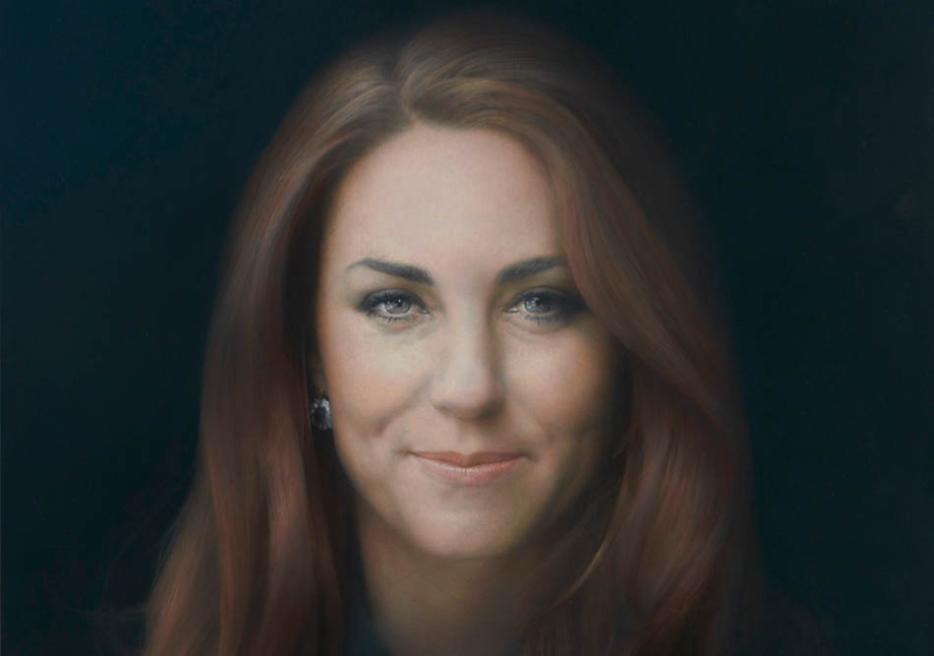Over in the United Kingdom, or as we colonials like to call it, the mother ship, the novelist Hilary Mantel has kicked up quite a fuss by writing a speech about the royals. Her critics include the Daily Mail, the Prime Minister and the Leader of the Opposition, deep readers all apparently. And they contend that she has trained an evil, jealous eye on Kate Middleton. It perhaps goes without saying that they find Mantel’s judgment of Middleton unfair. The press in particular intimates that she must be jealous to dare to criticize Kate.
What, precisely, is the nature of the judgment, you ask? In the essay, entitled “Royal Bodies,” Mantel considers what it is that we expect, physically, of young women in Kate’s position. Mantel proceeds on the premise that the press treats Kate as little more than an incubator of slightly more genetically-diverse future kings and queens, so it’s hardly surprising for them to have taken offence. Mantel doesn’t quite let the rest of us off the hook, either. Royals, she says, are to the public like “gods and beasts. They are persons but they are supra-personal, carriers of a blood line: at the most basic, they are breeding stock, collections of organs.”
To these observations Mantel adds no real pronouncements on Kate’s personality or inner beliefs. She poses musings with words like “seems to” and “appeared,” as in “appeared to have been designed by a committee and built by craftsmen, with a perfect plastic smile and the spindles of her limbs hand-turned and gloss-varnished.” (This has been transformed by the press into a slur on Kate, impliedly insisting that she is actually perfect. Yikes.) She also asks things like: “What does Kate read? It’s a question.” It is! And one which I have a disquieting hankering to know the answer to.
The persistence of the Royal hold on public imagination, in Canada as much as the UK, is one of the great intellectual mysteries of my adult life. And yet I understand it; I am certainly not alone in having been raised on Diana stardust. My mother was into the Diana thing while it was happening and so was I. It wasn’t until I got to undergrad at McGill, years after she’d died, that I began to question it seriously. I thought for awhile we’d all agreed that it turned out to be icing sugar, melting fast on the tongue but having a certain nauseous sweetness. But as soon as William announced he was getting married the fairy spell kicked up again; a lot of people turned out for that Canadian visit! And I found myself in Toronto bars, with friends who think of themselves as upright, solid feminists, discussing what we thought of the wedding dress. (Too staid, my friend thought. I agreed.)
Talk is just talk, of course, but the reason Mantel has kicked up such a fuss is that the talk has solidified into something else entirely. Imagine, for example, that Hilary Mantel had directly criticized Kate’s performance in some way, implied that there was something wrong with her. Ian Crouch calls the “plastic” phrase “mean” at the New Yorker. I frankly don’t know what he is talking about. What are the real consequences of Kate not being one hundred percent unimpeachably beautiful and perfect and graceful in every situation? Isn’t she an actual human being, anyway? Personally, I always feel relieved when I perceive a bead of sweat on a celebrity brow, a wrinkle on a satin dress. It means there isn’t some higher plane of existence I’m missing out on by having unsteady eyeliner and less than impeccable posture.
Usually left unmentioned by her critics is that for Mantel, the humanization of monarchy is not simply an abstract question, it’s a professional one. Since she’s been writing her great Booker novels, on Thomas Cromwell, she’s had to stretch her imagination in the direction of the inner lives of people we know only from a distance. Wisely, she has usually chosen earlier subjects, people who are already mediated by paintings and parchment. In the LRB, she claimed that somehow, because none of us saw Anne Boleyn in the flesh, we are not as attached to her, or perhaps more particularly, our idea of who she was. Because while you want to say that not inhabiting the minds of living creatures is a matter of respect, the recently deceased also get extended this courtesy. The passage of time matters; no one worries that we might be telling lies about Marie Antoinette and Katherine Howard.
For example: when Monica Ali, another novelist, tried to do to Diana what Mantel did for the Tudors, everyone shrank from her maneuver. It felt disrespectful, somehow. The critics shrugged and called the book an “entertainment,” which is the usual dismissal of fiction written by, about, and for women. You can say that this indicates a disparity of talent betwee Ali and Mantel, but it’s something more than that. It is hard to see how a book about Diana could be anything but a spectacle. I have never much subscribed to the “Diana was a very silly woman” school of thought as I do to the one that thinks we knew so very little about her, for someone whose private life was all over the tabloids. We only got the surface, despite all the professions of authenticity.
This, as it turns out, is Mantel’s theory too; she points out that it was Diana’s receptiveness, her passiveness, that made her “more royal than the family she joined.” And though people keep reading this, on my Facebook and Twitter feeds, to build Diana as a better person than Kate, I wonder when it was we fell back into the trope of believing that “royalness” had any relationship whatsoever to “personhood.” The great comfort of the Canadian attachment to the royals, after all, is that by dint of distance, we have never had to consider them as actual rulers. Even their ceremonial function is usually achieved by proxy, the royal face being most familiar to us from its imprint on coins and dollar bills than in life. The Constitution structured our relationship to them such that they are not-really-real. And yet here we are, in a world where gallons of ink are going to be spilled on this, much of them misunderstanding the point that Kate, whoever she is, whatever it’s worth, is drowning in them.
--
Image: Paul Emsley's much criticized portrait of Kate Middleton.






